Tomb 87
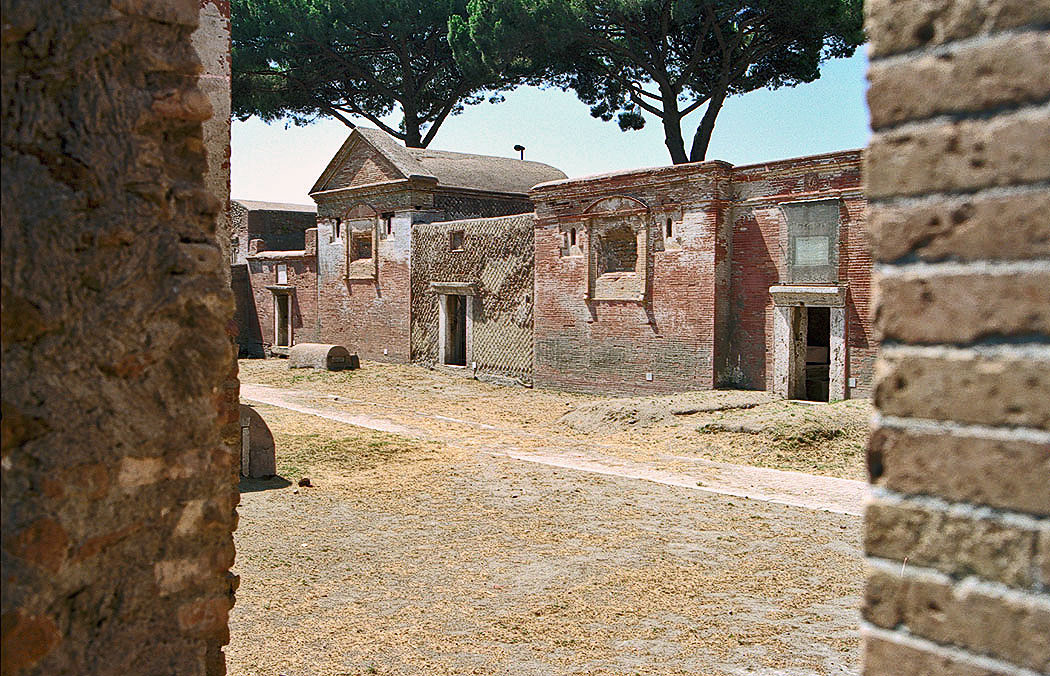
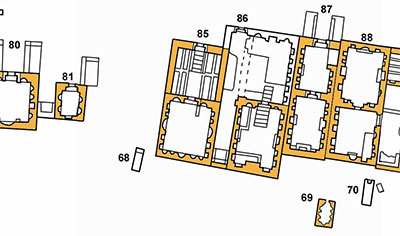 Tomb 87 is one of the tombs of which the enclosure was built immediately (see tomb 34, 75, 88 and 90). Like the previous tomb, the façade is richly decorated with flowers cut of pumice-stone. Tomb 87 has been built in the open space between tombs 86 and 88 and lies a little bit more backwards than the other graves.
Tomb 87 is one of the tombs of which the enclosure was built immediately (see tomb 34, 75, 88 and 90). Like the previous tomb, the façade is richly decorated with flowers cut of pumice-stone. Tomb 87 has been built in the open space between tombs 86 and 88 and lies a little bit more backwards than the other graves.
There is a biclinium at the entrance.
Above the entrance, surrounded by a nice cornice of garlands with a rosette in top is an inscription:
P(ublius) VARIVS AMPELVS
ET VARIA ENNVCHIS
FECERVNT SIBI ET
VARIAE P(ubli) F(iliae) SERVANDAE PATRONAE
ET LIBERT(is) LIBERTABVS POSTERISQ(ue) EORVM
ITA NE IN HOC MONIMENTO SARCOPHAGVM
INFERATVR H(oc) M(onumentum) H(eredem) F(amiliae) EX(terum) NON S(equetur)
IN FRONTE P(edes) X S(emis) (quadrans) IN AGRO P(edes) XXXIII
Publius Varius Ampelus and Varia Ennuchis have built this monument for themselves and for Varia Servanda, daughter of Publius, their patron, and the descendants, in such a way that no sarcophagus may be brought in. The monument cannot be inherited by someone outside the family. The area measures in width 10,75 feet, in depth 33 feet.
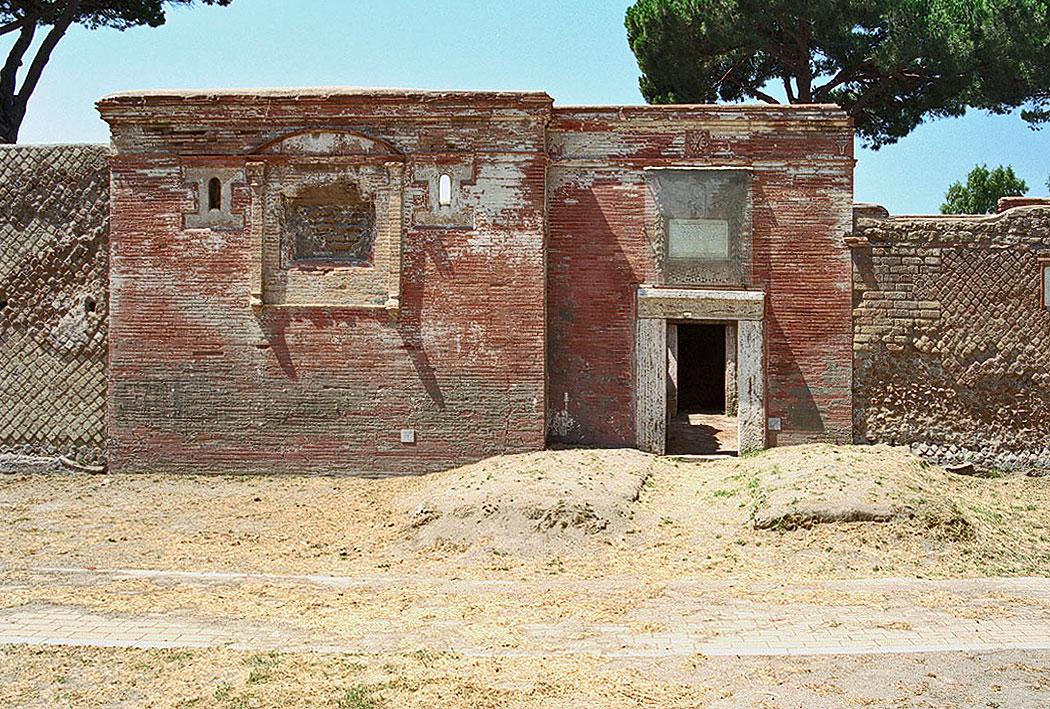
We find the same inscription above the entrance of the burial chamber. This is the only grave where the interring of human bodies was explicitly prohibited. This prohibition was respected till the time of Antoninus Pius. After that time sarcophagi were placed in this tomb.
It is remarkable that especially in tomb 87 a lot of sarcophagi are stored today.
The wooden door including the lock which gave access to the enclosure has been preserved and is stored in the Ostian depot.
The side walls of the enclosure have an aedicula in the centre flanked by small niches.
In the corner between the left wall and the entrance wall was a furnace.
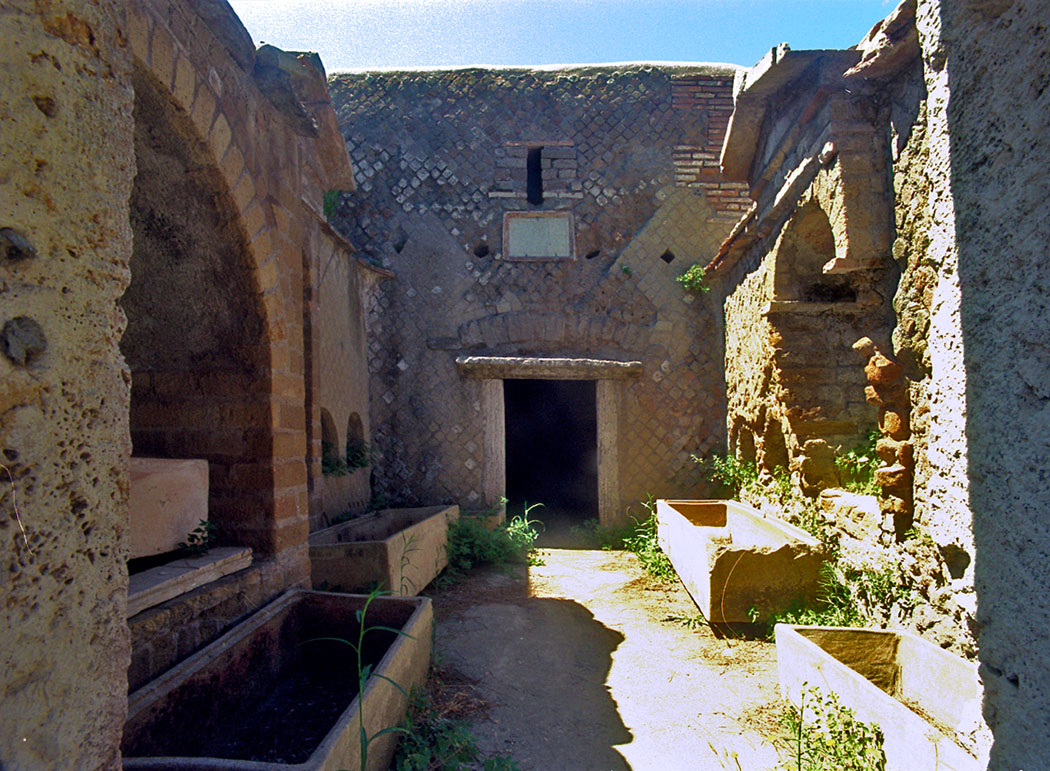
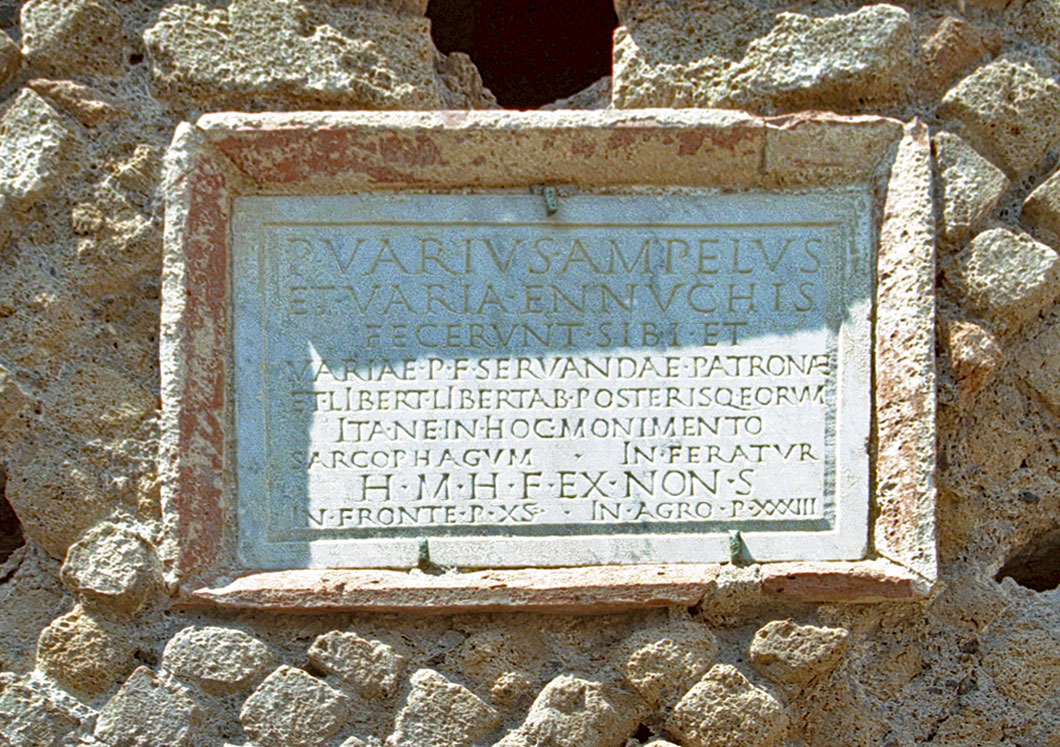
The burial chamber was organized in the same way. Below the niches are small marble plates. On the one below the central niche ( 31,5 x 30,5 cm) we can read:
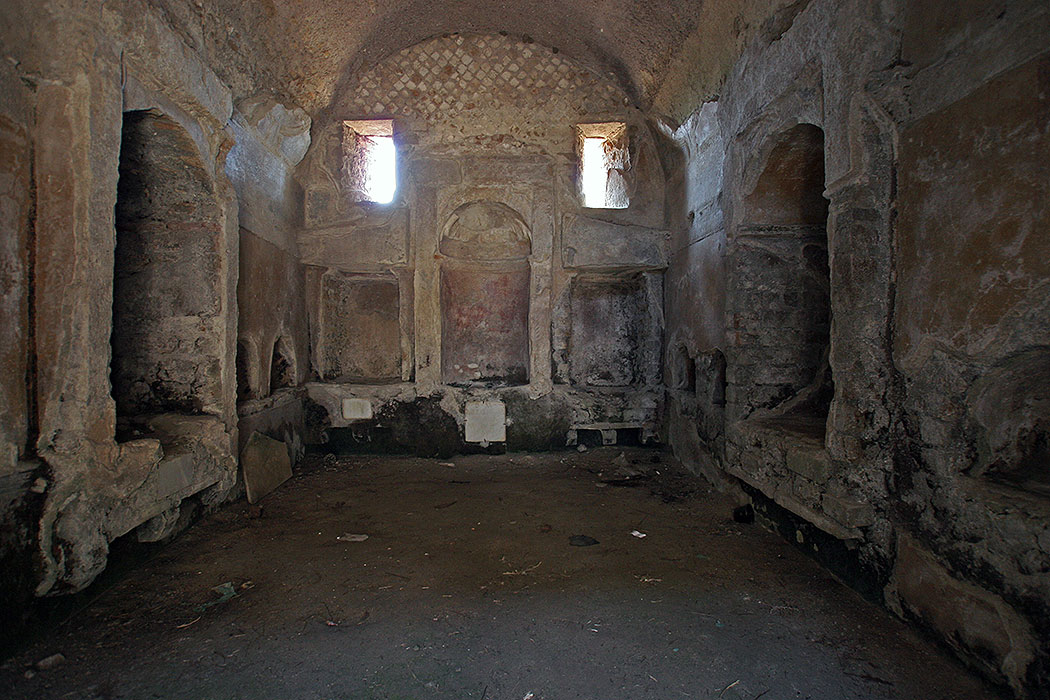
VARIAE P(ubli) F(iliae)
SER
VANDAE
AMPELVS ET
ENNYCHIS
LIBERTI D(e) S(uo)
P(osuerunt)
The burial chamber was nicely decorated and so was the mosaic floor. On the walls, small pictures were painted, framed in painted cornices. In the niche, to the right of the central niche in the back wall a male figure was depicted, dressed in a toga, with a scroll in his hand. In front of him is a boy, dressed in a short tunica, holding a tray (museum of Ostia, inv. nr. 10037). 1
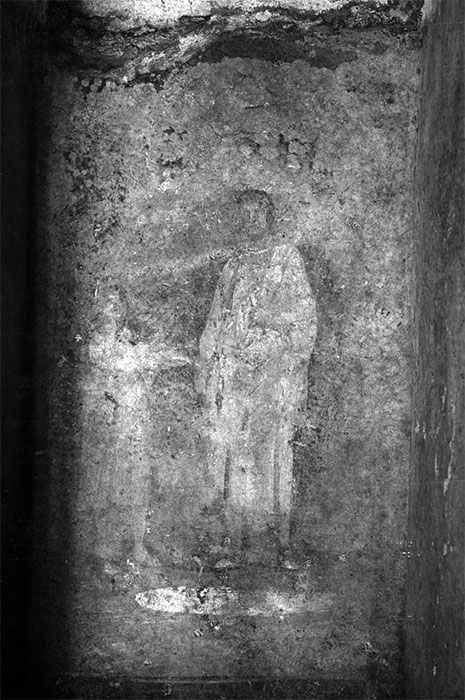
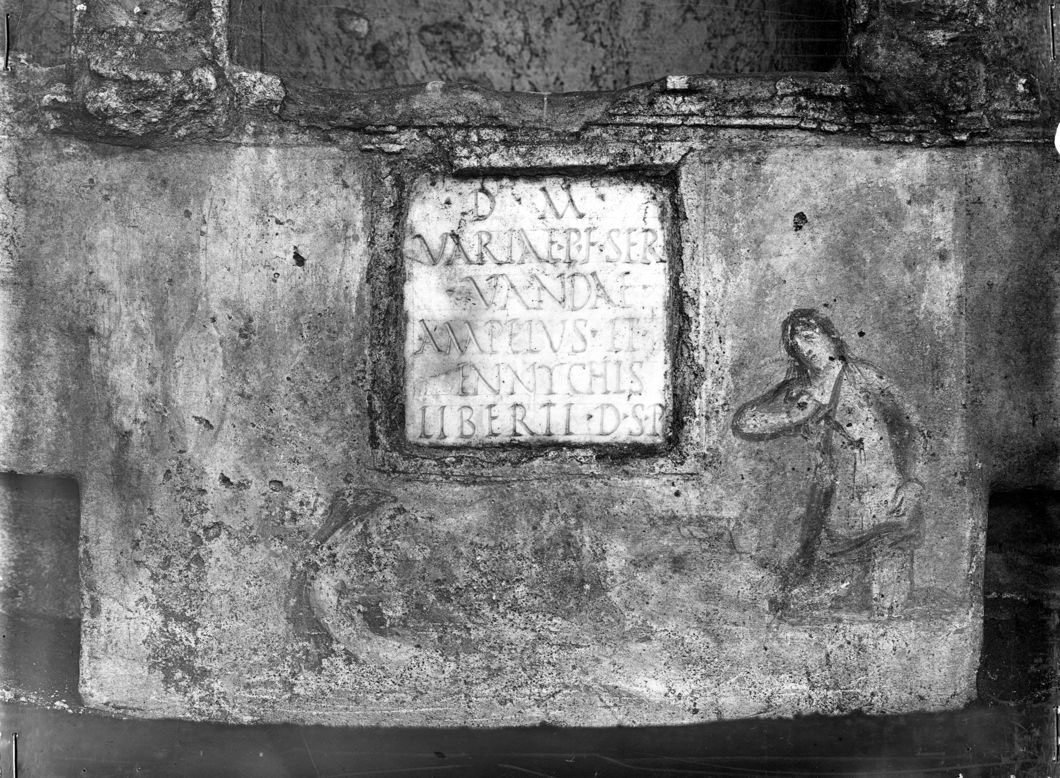
in the back-wall 3.
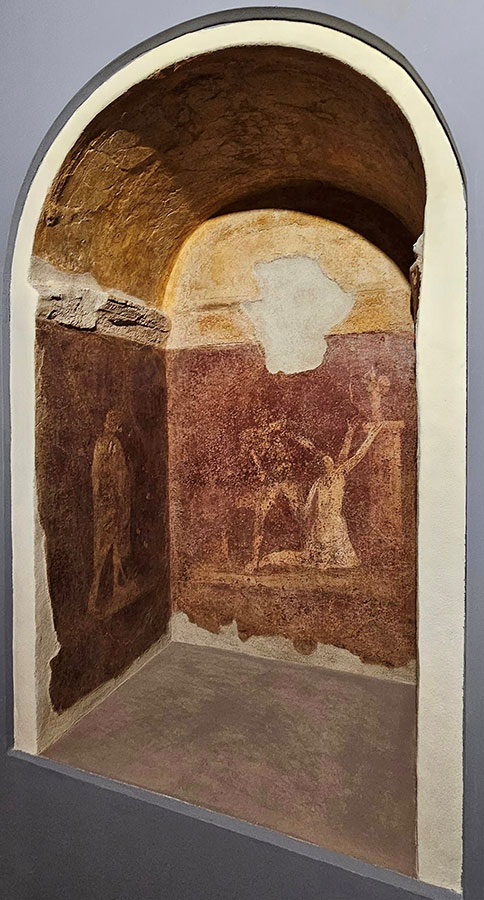
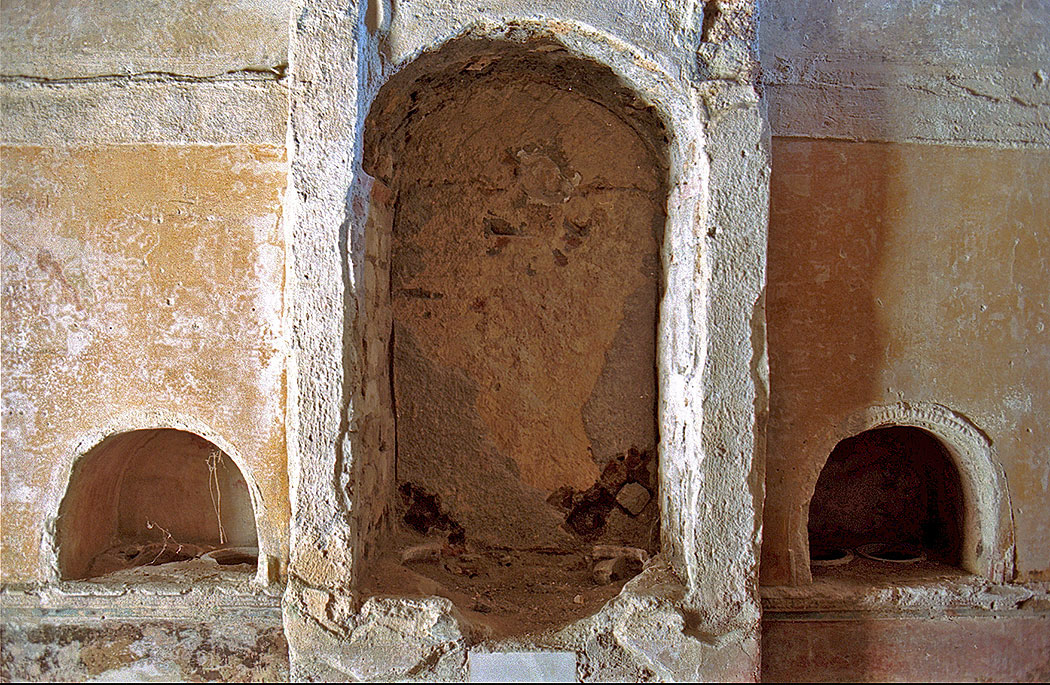
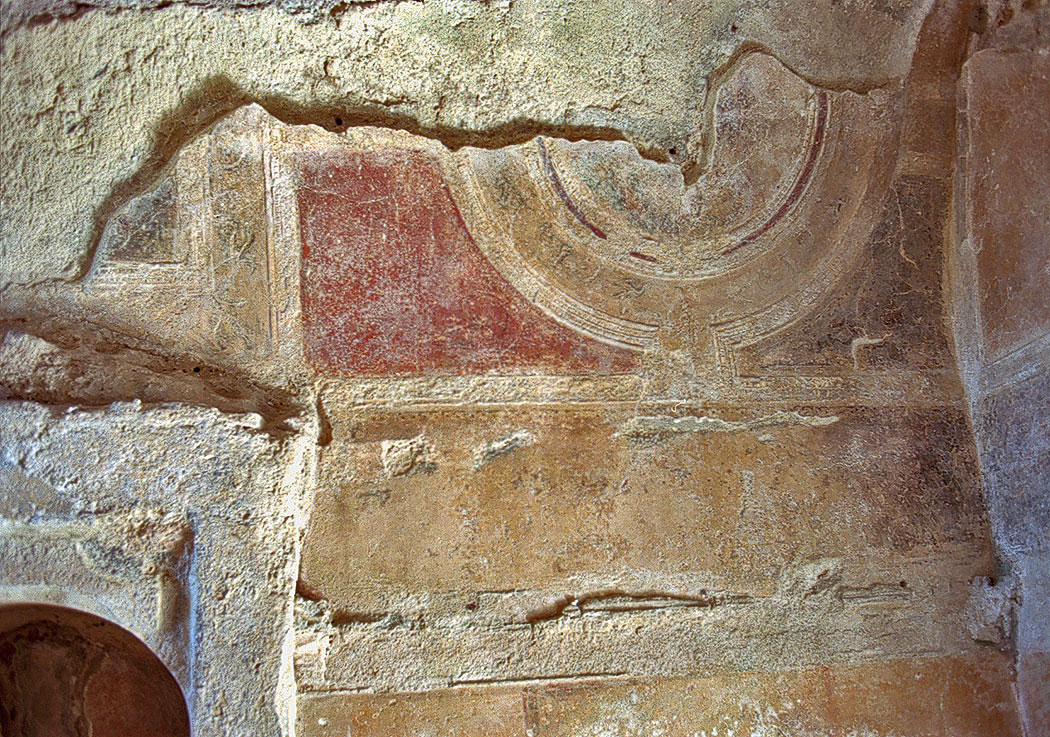
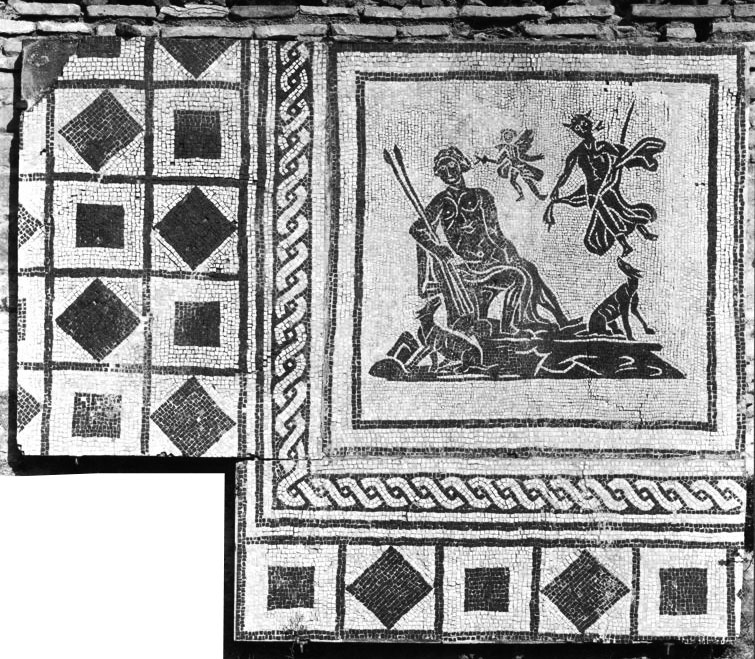
- Sources
- Russel Meigs - Roman Ostia, At the Clarendon Press 1973
- Guido Calza - Necropoli nell'Isola Sacra'(1940)
- Dr. Jan Theo Bakker.
- Hilding Thylander - Inscriptions du port d'Ostie (Lund C W K Gleerup 1952).
- Ida Baldassarre, Irene Bragantini, Chiara Morselli and Franc Taglietti - Necropoli di Porto, Isola Sacra (Roma 1996).
- Notes
- 1: During the excavations another painting was found in the left niche next to the central one on the back-wall. Calza interpretted this picture as a sitting emperor or magistrate administering justice (Probably Traian). The picture can not be seen anymore. - Guido Calza: Necropoli Nell'Isola Sacra (1940)
- 2: A deceased man and a child. Photo: ICCD E018913.
- 3: Pyramus and Thisbe. Photo: ICCD E017014.
- 4: Ajax abducting Cassandra. Photo: Ilya Gotlinsky.
- 5: Mosaic of Selene and Endymion. ICCD E069968.
Isola Sacra Index (D)

Speciale sectie over de Romeinse begraafplaats van Portus (Engels)....
Weiterlesen ...Leptiminus (Englisch))
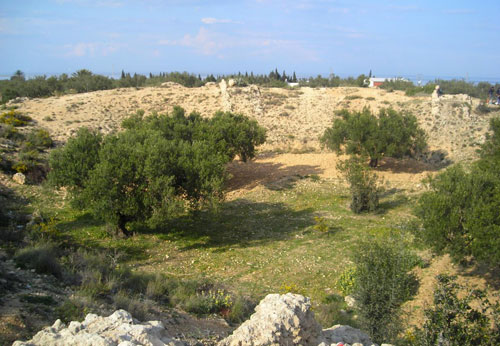
At the site of present-day Lamta on Tunisia's east coast, there was already a port city named Leptis Minor ....
Weiterlesen ...Römisches Seehandelsrecht (Englisch)

Roman law is the finest monument that Rome bequeathed to Western Europe....
Weiterlesen ...Sullecthum (Salakta) Englisch

In the Sahel, in the Tunisian province of Madhia, we find by the sea the small town of Salakta....
Weiterlesen ...Colonia Julia ad Turrem Libisonis (Englisch)

.....probably founded by Julius Ceasar around 46 BC, was located in the north-west of Sardinia.
Weiterlesen ...
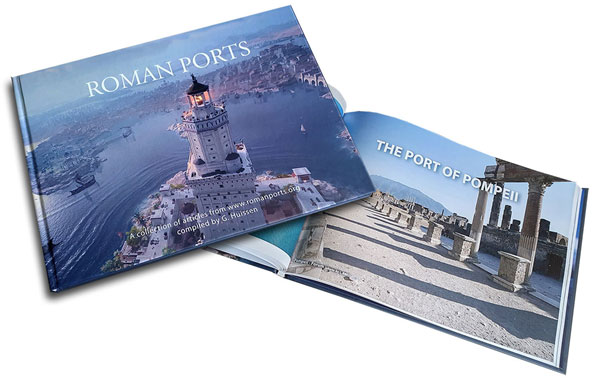
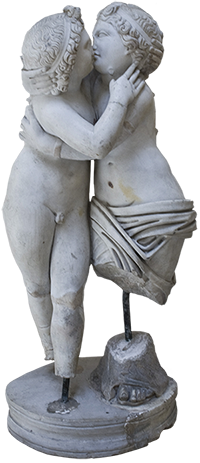 We are committed to providing versions of our articles and interviews in several languages, but our first language is English.
We are committed to providing versions of our articles and interviews in several languages, but our first language is English.